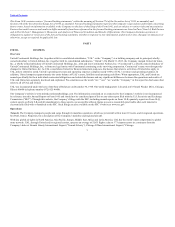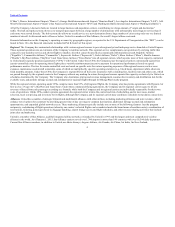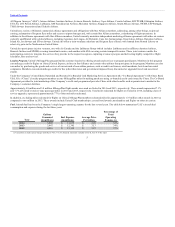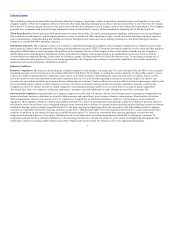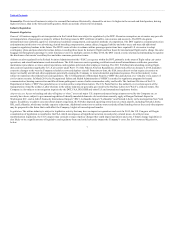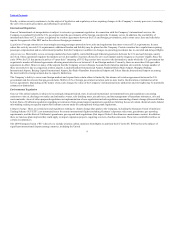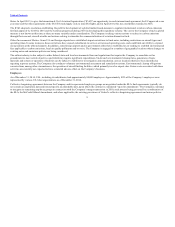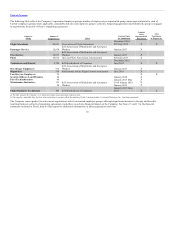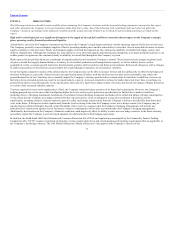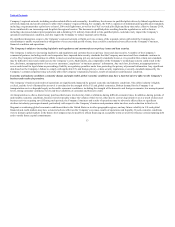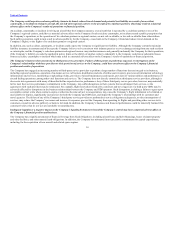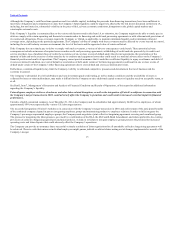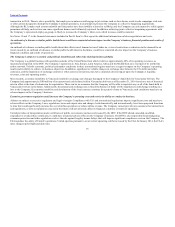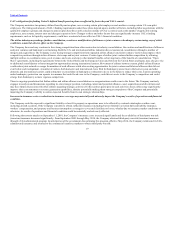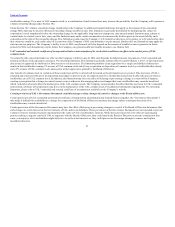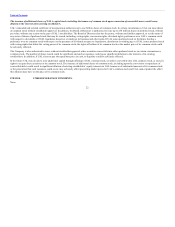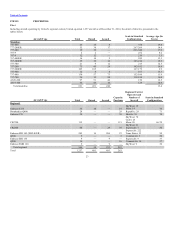United Airlines 2014 Annual Report Download - page 13
Download and view the complete annual report
Please find page 13 of the 2014 United Airlines annual report below. You can navigate through the pages in the report by either clicking on the pages listed below, or by using the keyword search tool below to find specific information within the annual report.
Table of Contents
Company’s regional network, including weather-related effects and seasonality. In addition, the decrease in qualified pilots driven by federal regulations has
adversely impacted and could continue to affect the Company’s regional flying. For example, the FAA’s expansion of minimum pilot qualification standards,
including a requirement that a pilot have at least 1,500 total flight hours, as well as the FAA’s revised pilot flight and duty time rules, effective January 2014,
have contributed to an increasing need for pilots for regional carriers. The decrease in qualified pilots resulting from the regulations as well as factors
including a decreased student pilot population and a shrinking U.S. military from which to hire qualified pilots, could adversely impact the Company’s
operations and financial condition, and also require the Company to reduce regional carrier flying.
If a significant disruption occurs to the Company’s regional network or flights or if one or more of the regional carriers with which the Company has
relationships is unable to perform their obligations over an extended period of time, there could be a material adverse effect on the Company’s business,
financial condition and operations.
The Company is subject to increasing legislative and regulatory and customer focus on privacy issues and data security.
The Company is subject to increasing legislative and regulatory and customer focus on privacy issues and data security. A number of the Company’s
commercial partners, including credit card companies, have imposed data security standards that the Company must meet and these standards continue to
evolve. The Company will continue its efforts to meet new and increasing privacy and security standards; however, it is possible that certain new standards
may be difficult to meet and could increase the Company’s costs. Additionally, any compromise of the Company’s technology systems could result in the
loss, disclosure, misappropriation of or access to customers’, employees’ or business partners’ information. Any such loss, disclosure, misappropriation or
access could result in legal claims or proceedings, liability or regulatory penalties under laws protecting the privacy of personal information. Any significant
data breach or the Company’s failure to comply with applicable U.S. and foreign privacy or data security regulations or security standards imposed by the
Company’s commercial partners may adversely affect the Company’s reputation, business, results of operations and financial condition.
Economic and industry conditions constantly change and unfavorable global economic conditions may have a material adverse effect on the Company’s
business and results of operations.
The Company’s business and results of operations are significantly impacted by general economic and industry conditions. The airline industry is highly
cyclical, and the level of demand for air travel is correlated to the strength of the U.S. and global economies. Robust demand for the Company’s air
transportation services depends largely on favorable economic conditions, including the strength of the domestic and foreign economies, low unemployment
levels, strong consumer confidence levels and the availability of consumer and business credit.
Air transportation is often a discretionary purchase that leisure travelers may limit or eliminate during difficult economic times. In addition, during periods of
unfavorable economic conditions, business travelers usually reduce the volume of their travel, either due to cost-saving initiatives or as a result of decreased
business activity requiring travel. During such periods, the Company’s business and results of operations may be adversely affected due to significant
declines in industry passenger demand, particularly with respect to the Company’s business and premium cabin travelers, and a reduction in fare levels.
Stagnant or weakening global economic conditions either in the United States or in other geographic regions, and any future volatility in U.S. and global
financial and credit markets may have a material adverse effect on the Company’s revenues, results of operations and liquidity. If such economic conditions
were to disrupt capital markets in the future, the Company may be unable to obtain financing on acceptable terms (or at all) to refinance certain maturing debt
and to satisfy future capital commitments.
13


